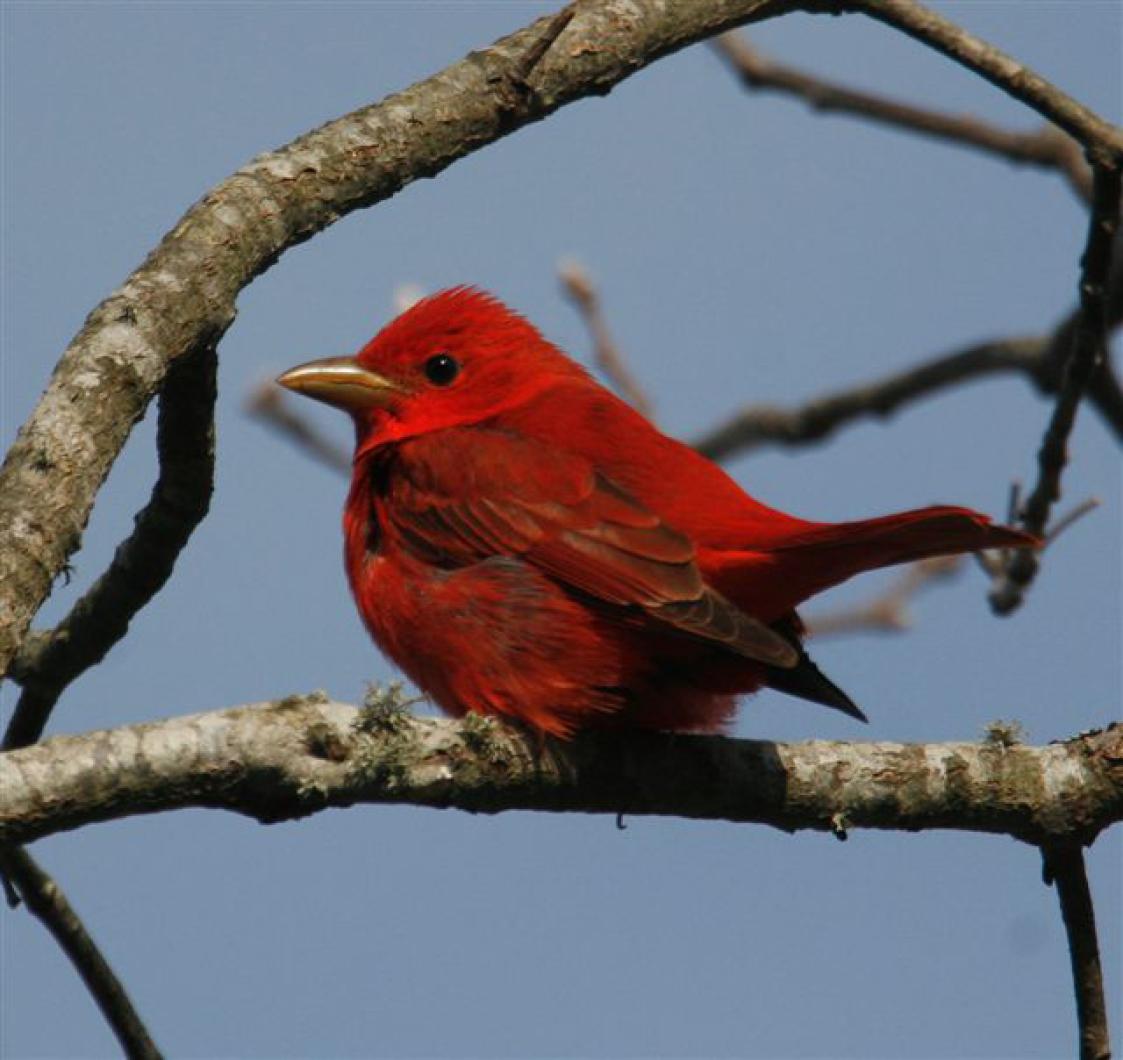There are many Island birders who have nest boxes of one kind or another. I have eastern bluebird boxes and also American kestrel boxes. It is great to get a front row seat, as it were, to watch the birds from mating to fledging. Cornell Lab of Ornithology has set up a nest watch program so that they can help scientists learn more about bird families and how they might be affected by climate change. Cornell is asking for volunteers to register their nest boxes (visit registeryournestbox.org.) It doesn’t cost a penny and will help scientists determine if birds are laying eggs sooner and other information that might be pertinent to climate change. Everything you need to register your nest box and get started with NestWatch is available on-line. Hope you will join!
Bird Sightings:
The most exciting news comes from Bert Fischer of Aquinnah who reported on April 20 that he finally had a tufted titmouse at his feeder. I think there was a titmouse in his house also . . . it wasn’t clear. Tufted titmice have now been reported at feeders in all of the Island towns.
Bald eagles are becoming more common on the Vineyard. Christine Warner spotted one sitting on a tree near the Martha’s Vineyard Golf Course on the Takemmy Trail on April 15. Gus Ben David adds that the nation’s bald eagle population has increased tremendously and Gus would not be surprised if some day these magnificent eagles nest on the Vineyard.
Liz Baldwin, who is monitoring the shorebirds of the Vineyard this summer, emailed to say that she found the first American oystercatcher nest of the season at Harthaven. She added that Chappaquiddick might have an oystercatcher nest also. Stay tuned.
Whit Manter spotted a Virginia rail scurrying along the creek at Quansoo on April 17. He also spotted an early American redstart on North Road near Hollyholm. Finally, Whit visited the Oak Bluffs pumping station on April 17 and saw and heard a white-eyed vireo. The same day Pete Gilmore was also at the pumping station and heard two white-eyed vireos singing. He mentioned it was almost a dueling song between the two. Pete and Lanny McDowell went over to Pennywise Path and met Tom Barrett, who showed them the male summer tanager. Lanny took some beautiful photos of the tanager.
Gus Ben David still has a northern parula at his feeder and mentioned that his dark-eyed juncos are leaving for points north. His chipping sparrows are back in force and his pine warblers are warbling away.
Ann Floyd and Tom Barrett have had a cardinal at their Pennywise Path feeder in Edgartown that looks like it has been through a wringer. It has a bum wing and all the feathers on its head are basically amongst the missing. Birds shed twice a year, but not all their feathers at once, so this cardinal probably has a bad case of feather mites. Chances are that Ann and Tom’s cardinal will not attract a mate due to the appearance, so the mites will not be passed to another cardinal or their young. Fear not, bird mites will not jump onto people, they are species-specific.
Jan Pogue recounted a lovely osprey happening at Wasque on April 18. “One clearly already has a girlfriend, but didn’t like that another one was in the area (actually on that unoccupied osprey pole before you turn into the parking lot, which makes you think they’re too close together, and that’s why one is still empty.) I first watched as the one with the friend fought with the other one, then flew back triumphantly to its own nest, where its girlfriend was waiting.
“Then I watched as the poor, lonely male sat on the empty osprey pole calling out piteously. I’d failed to note that there was another osprey on the ground by the road, and then as the lonely male began to call out, the one on the ground began to preen itself, and strut a bit across the road. The one on the pole called for awhile — what an absolutely beautiful call they have! — when suddenly the one on the road flew away, into the woods. The one on the empty pole immediately followed, and they sort of danced in the air together, then both flew off toward Edgartown. All this took about 15,20 minutes.”
What Jan saw was a pair of osprey on the first pole defending their nest. The other two osprey might have been a male and female, or more likely two males as this is the time of year that bachelors are trying to find nest sites. Rob Bierregaard said he just finished reading a new book called the Life of the Osprey by a Scottish ornithologist that documents interesting behavior in the osprey bachelors as well as some nest swapping. Somewhat of a soap opera, Rob added.
Bob and Phyllis Conway spotted a peregrine falcon sitting on the wires along South Road in Chilmark by the Allen Farm. Although peregrine falcons are basically hunters of waterfowl, they will chase flocks of “dickie” birds.
John Liller and Simon Perkins will be conducting a workshop for Vineyard Birders interested in helping with the Massachusetts Breeding Bird Atlas. The meeting will take place at the Felix Neck Wildlife Sanctuary on May 2 at 11 a.m.




Comments
Comment policy »